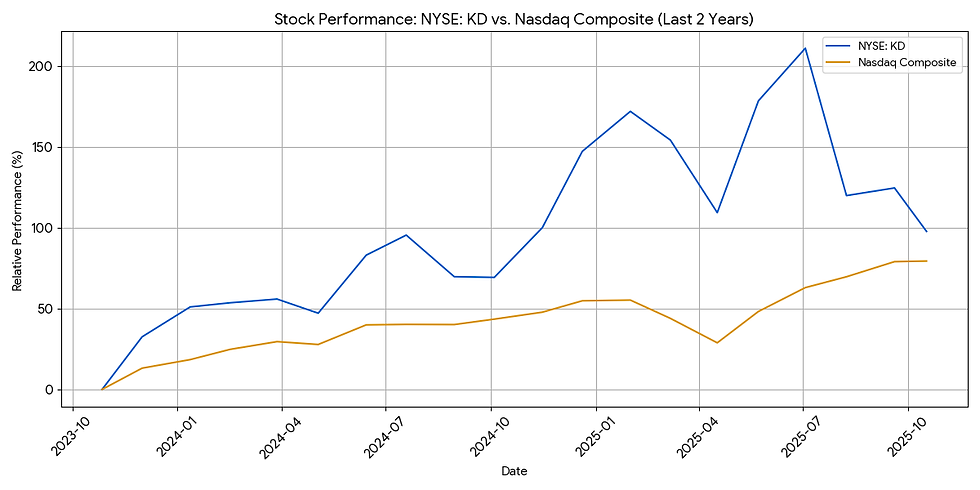Kyndryl Readiness Report Finds AI Momentum — and a Growing Readiness Gap
- Niv Nissenson
- Oct 20
- 2 min read
Kyndryl (NYSE: KD) has published its new 2025 Readiness Report which captures both optimism and constraint in enterprise AI adoption. Surveying 3,700 senior leaders across 21 countries, the company found that 54% of organizations now report positive ROI from AI investments, a 12-point rise from 2024. Yet 62% still haven’t advanced beyond the pilot stage, suggesting that success stories remain the exception, not the norm.
Confidence levels remain high: nine in ten executives say they have the tools and processes to scale innovation. But more than half point to their legacy tech stack as the main barrier to modernization. The readiness gap extends to people as well, only 29% of respondents believe their workforce is adequately prepared for AI, even though 87% expect jobs to be “completely transformed” by it within a year.
Kyndryl’s report (which you can access here) also reveals a shifting technology landscape.
70% of CEOs admit their current cloud setup was reached “by accident rather than design.”
65% have modified cloud strategies in response to new geopolitical and regulatory pressures.
AI investment is up 33% year-over-year, with 68% of organizations spending heavily on at least one AI use case — cybersecurity chief among them.
Amid the surge in adoption, Kyndryl identifies a persistent “readiness gap” between enthusiasm for AI’s potential and the infrastructure, skills, and cultural readiness required to scale it. Kendryl's stock price has risen by 100% in 2 years, however it did encounter very hihg volatility. In July 2025 it has reached a valuation of almost 10Bn before sliding to it's current valuation of 6.4 Bn.

TheMarketAI Take
The findings echo what MIT researchers have described as AI’s “production gap,” with up to 95% of pilot projects failing.
Beneath the technical and organizational hurdles lies a deeper challenge: AI’s inherent variability. Machine learning systems generate probabilistic outputs, not fixed results. In controlled pilots, this flexibility fuels creativity and rapid iteration. In production environments, it introduces risk, inconsistency, compliance exposure, and unpredictable outcomes.
That output variance may represent an inherent ceiling on AI scalability, at least until enterprises learn how to tame or buffer it.



